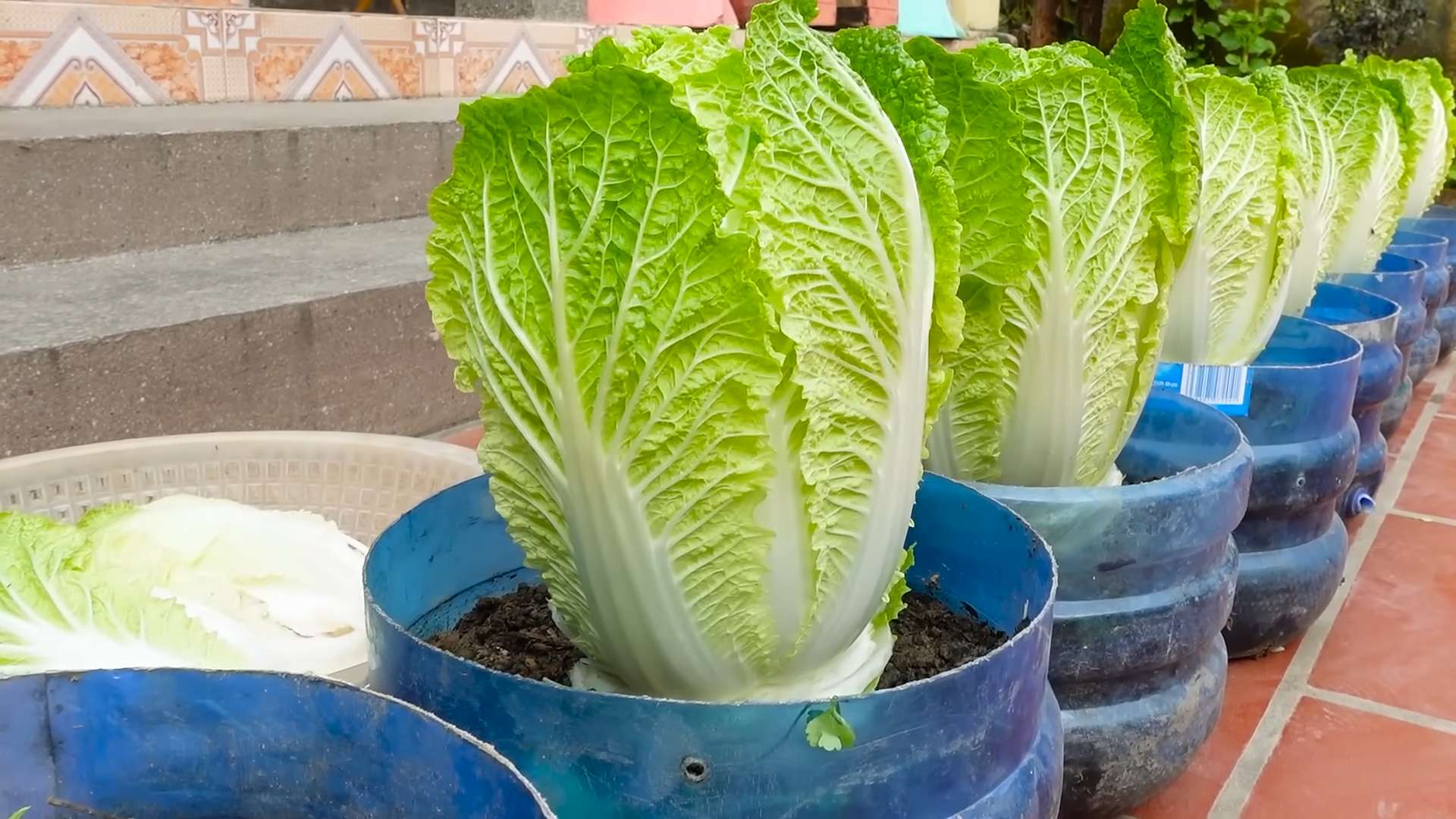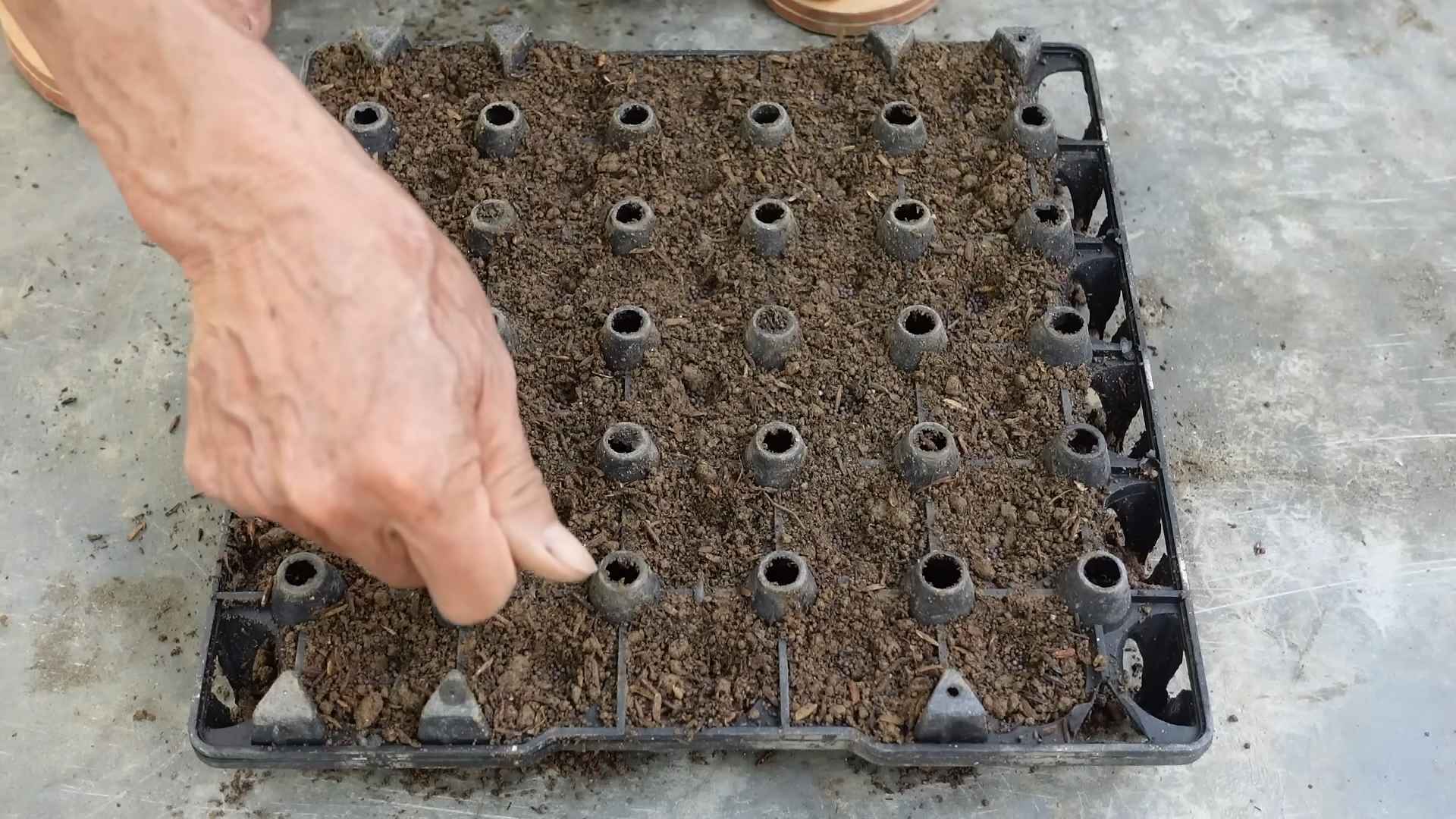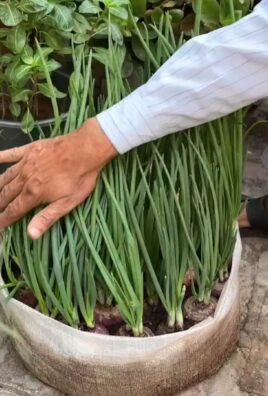Growing peanuts at home might sound like a task best left to large farms, but I’m here to tell you it’s surprisingly achievable, even in your own backyard! Forget those store-bought peanuts – imagine the satisfaction of harvesting your own crunchy, homegrown treats.
Peanuts, also known as groundnuts, have a rich history, dating back thousands of years in South America. They weren’t always a staple in Western diets, but their journey across continents has made them a beloved snack worldwide. Now, you can be a part of that story by cultivating your own peanut patch!
Why should you try this DIY project? Well, for starters, you’ll know exactly where your food comes from and what’s gone into growing it. Plus, growing peanuts at home is a fantastic way to connect with nature, learn about plant life cycles, and enjoy a truly rewarding gardening experience. In this article, I’ll share some simple yet effective tricks and hacks to help you successfully grow peanuts, regardless of your gardening experience. Get ready to dig in and discover the joy of homegrown peanuts!

Growing Peanuts at Home: A Beginner’s Guide
Okay, so you want to grow peanuts at home? Awesome! It’s a surprisingly rewarding experience, and trust me, there’s nothing quite like the taste of freshly harvested, homegrown peanuts. It might seem a little daunting at first, but I promise, with a little planning and effort, you can totally do this. I’m going to walk you through everything you need to know, from choosing the right peanuts to harvesting your bounty. Let’s get started!
Choosing Your Peanut Variety
First things first, you need to decide what kind of peanut you want to grow. There are four main types, and each has its own characteristics:
* Runner Peanuts: These are the most common type, often used in peanut butter. They have a uniform size and shape, making them ideal for processing. They mature in about 120-130 days.
* Virginia Peanuts: These are the largest peanuts, often roasted and sold in the shell. They’re great for snacking! They also take around 120-130 days to mature.
* Spanish Peanuts: These have smaller kernels and a reddish-brown skin. They have a higher oil content, giving them a distinctive flavor. They mature a bit faster, around 90-110 days.
* Valencia Peanuts: These have multiple kernels per shell and are known for their sweet flavor. They’re often boiled or roasted. They mature in about 90-110 days as well.
For beginners, I usually recommend Runner or Virginia peanuts because they’re readily available and relatively easy to grow. But hey, if you’re feeling adventurous, go for a Spanish or Valencia!
Preparing Your Soil
Peanuts are pretty picky about their soil. They need well-drained, sandy loam soil with a pH between 6.0 and 6.5. Here’s how to get your soil ready:
* Soil Testing: Before you do anything, get your soil tested. You can usually get a soil testing kit from your local garden center or agricultural extension office. This will tell you the pH of your soil and what nutrients it’s lacking.
* Amending the Soil: If your soil is too heavy (like clay), amend it with plenty of organic matter, such as compost, well-rotted manure, or peat moss. This will improve drainage and aeration. If your soil is too acidic (pH below 6.0), add lime to raise the pH. If it’s too alkaline (pH above 6.5), add sulfur to lower the pH.
* Fertilizing: Peanuts need phosphorus and potassium, but they don’t need a lot of nitrogen. In fact, too much nitrogen can actually inhibit peanut production. Use a fertilizer that’s low in nitrogen (the first number in the NPK ratio) and higher in phosphorus and potassium (the second and third numbers). A 5-10-10 fertilizer would be a good choice. Work the fertilizer into the soil before planting.
* Weed Control: Peanuts don’t compete well with weeds, so it’s important to get rid of any weeds in your planting area before you plant. You can do this by hand-pulling, hoeing, or using a pre-emergent herbicide.
Planting Your Peanuts
Now for the fun part – planting! Here’s how to do it:
1. Timing: Peanuts need warm soil to germinate, so wait until the soil temperature is consistently above 65°F (18°C) before planting. This is usually a couple of weeks after the last frost in your area.
2. Seed Preparation: You can plant peanuts in the shell or shelled. If you’re planting in the shell, crack the shell gently to help the peanut sprout. If you’re planting shelled peanuts, make sure they’re raw and unsalted. Soaking the peanuts in water for a few hours before planting can also help speed up germination.
3. Planting Depth and Spacing: Plant the peanuts about 1-2 inches deep and 6-8 inches apart in rows that are 2-3 feet apart.
4. Watering: Water the peanuts thoroughly after planting. Keep the soil consistently moist, but not waterlogged, until the seedlings emerge.
Caring for Your Peanut Plants
Once your peanut plants are up and growing, here’s how to keep them happy and healthy:
* Watering: Peanuts need about 1 inch of water per week, especially during flowering and pod development. Water deeply and regularly, but avoid overwatering, which can lead to fungal diseases.
* Weed Control: Keep the area around your peanut plants free of weeds. You can hand-pull weeds, hoe them, or use a mulch to suppress weed growth.
* Hilling: This is a crucial step! As the peanut plants grow, they’ll produce “pegs” that grow down into the soil and form the peanuts. To encourage pegging, hill the soil around the base of the plants every few weeks. This means mounding up soil around the stems to provide a loose, easy-to-penetrate medium for the pegs.
* Fertilizing: You can side-dress your peanut plants with a little bit of fertilizer about a month after they emerge. Use the same low-nitrogen fertilizer you used at planting.
* Pest and Disease Control: Peanuts can be susceptible to pests like aphids, spider mites, and leafhoppers. Check your plants regularly for signs of infestation and treat them with an appropriate insecticide if necessary. They can also be affected by fungal diseases like leaf spot and rust. To prevent these diseases, make sure your plants have good air circulation and avoid overwatering. You can also use a fungicide if necessary.
Harvesting Your Peanuts
This is the moment you’ve been waiting for! Here’s how to harvest your peanuts:
1. Timing: Peanuts are usually ready to harvest about 120-150 days after planting, depending on the variety. A good indicator is when the leaves start to turn yellow and the inside of the peanut shells are showing dark veins.
2. Digging: Use a garden fork or shovel to carefully dig up the peanut plants. Be gentle, as you don’t want to damage the peanuts.
3. Shaking and Cleaning: Shake off as much soil as possible from the peanut plants. Then, gently wash the peanuts with water to remove any remaining dirt.
4. Curing: This is a very important step! Curing helps to dry the peanuts and develop their flavor. Hang the peanut plants upside down in a well-ventilated area for 2-4 weeks, or until the peanuts are completely dry. You can also spread the peanuts out on a screen or tarp to dry. Make sure they’re not in direct sunlight, as this can cause them to dry too quickly and crack.
5. Storage: Once the peanuts are completely dry, you can store them in a cool, dry place in airtight containers. They should last for several months.
Troubleshooting
Sometimes things don’t go exactly as planned. Here are a few common problems you might encounter when growing peanuts and how to fix them:
* Poor Germination: If your peanuts aren’t germinating, it could be due to cold soil, poor-quality seeds, or overwatering. Make sure the soil temperature is above 65°F (18°C) before planting, use fresh seeds, and avoid overwatering.
* Yellowing Leaves: Yellowing leaves can be a sign of nutrient deficiency, overwatering, or disease. Get your soil tested to see if it’s lacking any nutrients. Make sure you’re not overwatering, and check your plants for signs of disease.
* Small Peanuts: Small peanuts can be caused by poor soil, lack of water, or pests. Amend your soil with organic matter, water regularly, and control pests.
* No Peanuts: If your plants are growing but not producing peanuts, it could be due to too much nitrogen in the soil, poor pollination, or lack of pegging. Use a low-nitrogen fertilizer, encourage pollination by planting flowers nearby, and make sure you’re hilling the soil around the base of the plants.
Enjoying Your Homegrown Peanuts
Now that you’ve harvested and cured your peanuts, it’s time to enjoy them! Here are a few ideas:
* Roasting: Roast your peanuts in the oven at 350°F (175°C) for 15-20 minutes, or until they’re golden brown and fragrant.
* Boiling: Boil your peanuts in salted water for 2-3 hours, or until they’re soft and tender.
* Peanut Butter: Make your own homemade peanut butter by grinding roasted peanuts in a food processor until smooth.
* Snacking: Simply enjoy your peanuts as a healthy and delicious snack!
Growing peanuts at home is a

Conclusion
So, there you have it! Growing peanuts at home is not only achievable, but it’s also a deeply rewarding experience. From the initial thrill of planting those unassuming seeds to the satisfaction of harvesting your very own homegrown bounty, this DIY project offers a unique connection to your food and the natural world.
Why is this a must-try? Because it’s more than just growing a snack; it’s about understanding the life cycle of a plant, appreciating the effort that goes into producing food, and enjoying the unparalleled flavor of freshly harvested peanuts. Store-bought peanuts simply can’t compare to the taste of those you’ve nurtured yourself. Plus, it’s a fantastic educational opportunity for children (and adults!), teaching them about botany, agriculture, and the importance of sustainable practices.
But the benefits don’t stop there. Growing your own peanuts allows you to control the entire process, from choosing organic seeds to avoiding harmful pesticides and herbicides. You know exactly what’s going into your food, ensuring a healthier and more wholesome snack for you and your family.
Looking for variations? Consider experimenting with different peanut varieties. Virginia peanuts are known for their large size and are great for roasting, while Spanish peanuts are smaller and sweeter, perfect for peanut butter. Runner peanuts are commonly used in commercial peanut butter production and are a reliable choice for home growing. You can also try growing peanuts in containers if you have limited space, or even indoors with the right lighting.
Another fun variation is to experiment with different soil amendments. Adding compost or other organic matter can improve soil drainage and fertility, leading to a more abundant harvest. You can also try inoculating your peanut seeds with nitrogen-fixing bacteria, which can help them absorb more nutrients from the soil.
Don’t be intimidated by the process. While it requires some patience and attention, growing peanuts at home is surprisingly straightforward. With a little planning and effort, you can enjoy a delicious and rewarding harvest.
We wholeheartedly encourage you to give this DIY trick a try. It’s a fun, educational, and ultimately delicious way to connect with your food and the natural world. And most importantly, remember to document your journey! Take pictures, keep notes, and share your experiences with us. We’d love to hear about your successes, your challenges, and any tips you discover along the way. Share your peanut-growing adventures on social media using #HomegrownPeanuts and inspire others to join the fun. Let’s cultivate a community of peanut enthusiasts and celebrate the joy of growing our own food!
Now, go get your hands dirty and experience the magic of growing peanuts at home! You won’t regret it.
Frequently Asked Questions (FAQ)
What is the best time to plant peanuts?
The ideal time to plant peanuts is after the last frost, when the soil temperature has warmed to at least 65 degrees Fahrenheit (around 18 degrees Celsius). This typically falls in late spring or early summer, depending on your climate. Planting too early can result in poor germination and stunted growth. In warmer climates with longer growing seasons, you may even be able to get two harvests in a single year. Check your local weather forecasts and planting guides for the most accurate timing in your specific region.
What kind of soil is best for growing peanuts?
Peanuts thrive in well-drained, sandy loam soil. This type of soil allows for good aeration and drainage, which is crucial for healthy root development and prevents the pods from rotting. Avoid heavy clay soils, as they can become compacted and restrict root growth. If you have clay soil, amend it with plenty of organic matter, such as compost or well-rotted manure, to improve drainage and aeration. A slightly acidic to neutral soil pH (around 6.0 to 7.0) is also ideal.
How much sunlight do peanuts need?
Peanuts require at least 6-8 hours of direct sunlight per day to thrive. Choose a planting location that receives ample sunlight throughout the day. Insufficient sunlight can lead to weak, leggy plants and reduced yields. If you’re growing peanuts indoors, supplement with grow lights to ensure they receive enough light.
How often should I water my peanut plants?
Water peanut plants regularly, especially during dry periods. Keep the soil consistently moist, but avoid overwatering, which can lead to root rot. Water deeply and less frequently, rather than shallowly and more often. During flowering and pod development, water is particularly important. As the plants mature and the pods begin to ripen, you can gradually reduce watering.
How long does it take for peanuts to mature?
Peanuts typically take 120-150 days to mature, depending on the variety and growing conditions. You’ll know they’re ready to harvest when the foliage begins to yellow and the pods feel plump and full. You can also dig up a few plants to check the maturity of the pods. The inside of the shell should be dark and the kernels should be fully developed.
What are common pests and diseases that affect peanuts?
Some common pests that can affect peanuts include aphids, spider mites, and leafhoppers. Diseases include leaf spot, root rot, and peanut rust. Monitor your plants regularly for signs of pests or diseases and take appropriate action if necessary. Organic pest control methods, such as insecticidal soap or neem oil, can be effective for controlling many pests. Ensure good air circulation and avoid overwatering to prevent fungal diseases.
How do I harvest peanuts?
To harvest peanuts, carefully dig up the entire plant, being careful not to damage the pods. Gently shake off any excess soil and hang the plants upside down in a well-ventilated area to dry for several weeks. Once the plants are dry, you can remove the peanuts from the vines.
How do I store peanuts?
Store peanuts in a cool, dry place in an airtight container. Shelled peanuts will last longer than unshelled peanuts. You can also freeze peanuts for longer storage. Roasted peanuts will have a shorter shelf life than raw peanuts.
Can I grow peanuts in containers?
Yes, you can grow peanuts in containers. Choose a large container (at least 18 inches in diameter) with good drainage. Use a well-draining potting mix and provide plenty of sunlight and water. Container-grown peanuts may not produce as many pods as those grown in the ground, but they can still provide a rewarding harvest.
What are some uses for homegrown peanuts?
The possibilities are endless! You can roast them for a delicious snack, make your own peanut butter, add them to salads or stir-fries, or use them in baking. Freshly harvested peanuts have a unique flavor that you won’t find in store-bought peanuts. Enjoy the fruits (or rather, the legumes!) of your labor!



Leave a Comment